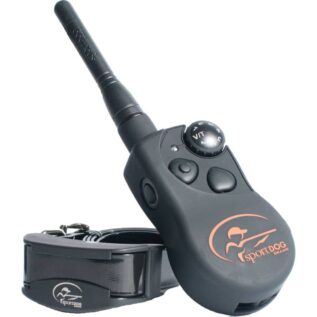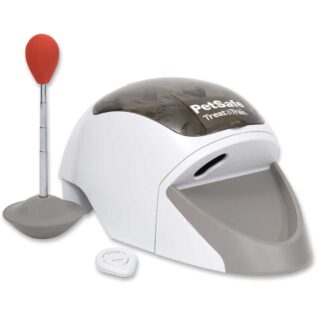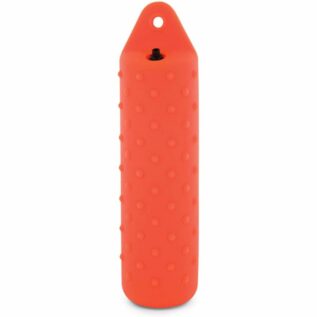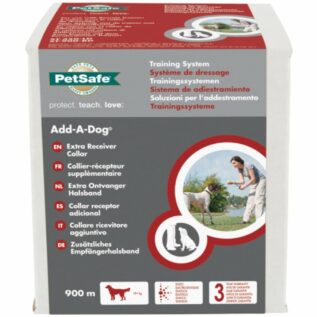A Comprehensive Guide to Buying the Ideal Dog Training Equipment
Training your dog can be a rewarding and bonding experience, but having the right equipment is crucial to this process. This guide will walk you through understanding your dog's unique needs and choosing the right dog training equipment.
Understanding Your Dog’s Needs
Before investing in any training equipment, it's essential to understand your dog’s individual needs.
Different Stages of a Dog's Life
Just like humans, dogs have different needs at various stages of their lives.
- Puppies: Young puppies are like sponges, eager to learn but also full of energy and easily distracted. Patience and consistency are key at this stage. You'll need tools like chew toys, training pads, and soft, comfortable collars and leashes suitable for their size. Puppies are still growing, so equipment should be adaptable or inexpensive to replace as they grow.
- Adult Dogs: Adult dogs might be more set in their ways, but they can still learn new behaviors and tricks. They'll need sturdy equipment that can stand up to their strength, like durable leashes, collars, and interactive toys for mental stimulation.
- Senior Dogs: Senior dogs might not be as active as they once were, but they still benefit from mental stimulation and gentle physical activity. Their training equipment might include comfortable harnesses to support their joints and interactive toys to keep their minds sharp.
Breed-Specific Needs
Different breeds have different characteristics, energy levels, and innate abilities that can influence the type of training equipment they need.
- Active Breeds: Breeds like Border Collies, Labrador Retrievers, and Australian Shepherds have high energy levels and may benefit from agility equipment for exercise and mental stimulation. They also tend to respond well to interactive toys and games.
- Small Breeds: Small breeds like Chihuahuas or Poodles may not require heavy-duty equipment. Lightweight leashes and small-sized training tools would be more appropriate for them.
- Large Breeds: Large breeds like Great Danes or Saint Bernards will need sturdy, durable equipment that can withstand their size and strength. Harnesses can be a good choice for large breeds, as they distribute pressure more evenly than a collar.
- Working Breeds: Breeds that were developed for specific tasks, such as hunting or herding, may benefit from training equipment that taps into these natural instincts. For instance, scent attractants or herding balls can be effective tools.
By understanding your dog's unique needs based on their life stage and breed, you can ensure that you're choosing the most effective equipment for their training.
Essential Dog Training Equipment
Leashes and Collars
A good quality leash and collar are the first items on any dog training equipment list. They're crucial for teaching basic obedience commands and ensuring your dog's safety.
- Leashes: There are different types, such as standard, retractable, and training leashes. Each serves a unique purpose and is used in different training scenarios. For instance, a standard leash is excellent for everyday use and basic obedience training, while a training leash can provide better control during training sessions.
- Collars: Just like leashes, there are several types of collars, including flat collars, martingale collars, and harnesses. The choice depends on your dog's breed, size, behavior, and the training objectives.
Training Treats
Training treats are small, tasty rewards used to reinforce positive behavior during training sessions. They're effective because most dogs are food motivated. The key is to choose treats that your dog loves but are still healthy and low in calories since you'll be giving them frequently during training.
Clickers
Clicker training is a method of positive reinforcement training that uses a small device that makes a distinctive 'click' sound. The sound is used to mark the exact moment the dog performs the desired behavior. The 'click' is then followed by a reward, usually a treat, to reinforce the behavior. This method can be highly effective because the 'click' sound is consistent and faster than verbal cues, helping the dog to quickly understand which behavior is being rewarded.
Training Pads
Training pads are essential, especially when house training puppies or older dogs that are new to living indoors. They're usually made of absorbent material and designed to draw moisture away from the surface, keeping your floors clean.
Training pads can be placed in a designated area in the house where your dog can 'go' when they can't go outside. They're also great for apartment living where outdoor access may be limited. With consistency, positive reinforcement, and patience, training pads can help significantly reduce house-training accidents.
Remember, each dog is unique, and what works best will depend on your dog's individual needs and the specific training goals you have set.
Specialized Training Equipment
Agility Equipment
Agility equipment provides a wonderful way for dogs to get exercise, mental stimulation, and learn new skills. It's particularly beneficial for high-energy breeds that need lots of exercise to stay happy and healthy. Agility training involves navigating a course with a variety of obstacles, including:
- Tunnels: Dogs learn to run through them, which can be a fun challenge and a great confidence booster.
- Hurdles: Jumping over hurdles helps improve a dog's coordination, timing, and physical fitness.
- Weave poles: Weaving in and out of a line of poles is a complex skill that can help enhance a dog's focus and agility.
It's worth noting that while agility training can be a competitive sport, you don't have to compete to enjoy its benefits. You can set up agility equipment in your backyard for a fun and engaging way to exercise and train your dog.
Anti-Barking Devices
Excessive barking can be a challenging behavior to manage. Fortunately, there are several types of anti-barking devices that can help:
- Ultrasonic devices: These emit a high-frequency sound that dogs find unpleasant but is inaudible to humans. When the dog barks, the device emits the sound, which discourages the dog from continuing to bark.
- Spray collars: These collars release a harmless but distracting spray of citronella when the dog barks, deterring them from barking further.
- Vibration collars: These collars vibrate when the dog barks. The sensation is not harmful but serves as a deterrent.
It's important to remember that these devices should be used in conjunction with positive reinforcement training, not as a standalone solution. Furthermore, excessive barking can often be a symptom of an underlying issue, such as anxiety or boredom, which should be addressed.
Invisible Fences
Invisible fences are an innovative tool for boundary training. They allow your dog to roam freely within a designated area without the need for physical fences. Here's how they work:
A wire is buried around the perimeter of the designated area, and a transmitter is connected to the wire.
Your dog wears a collar that communicates with the transmitter. If your dog gets too close to the boundary, the collar emits a warning beep.
If your dog continues to move closer to the boundary, the collar will deliver a harmless but surprising static correction.
Invisible fences can be a great solution for giving your dog freedom while ensuring they stay safe. However, proper training is crucial to help your dog understand the system and react appropriately to the warning signals.
Choosing the Right Equipment: Tips and Tricks
Quality Over Quantity
In a world of endless choices, it's tempting to buy every dog training gadget on the market. However, it's smarter to invest in a few essential, high-quality pieces that will last. Durability is key, especially considering dogs can be quite tough on their toys and training equipment. Well-made items might have a higher upfront cost, but they'll save you money in the long run as they won't need frequent replacement.
Comfort and Safety
Dog training should be a positive experience for both you and your furry friend. Therefore, always put your dog's comfort and safety first when choosing training equipment. Avoid any items that could potentially harm your dog, like choke chains or shock collars. Opt for equipment that is designed with the dog's well-being in mind. For example, when selecting a collar, it should fit snugly but not be too tight; you should be able to fit two fingers between the collar and your dog's neck.
Training Goals
Your training goals should dictate the type of equipment you need. If you're focusing on basic obedience, a good quality leash, collar, and training treats may be sufficient. If you're working on agility, you might need to invest in specialized equipment like tunnels and hurdles. And if you're training a hunting dog, scent attractants might be on your shopping list. By identifying your training objectives upfront, you can ensure that you're only purchasing equipment that will truly be useful.
Remember, buying the right dog training equipment isn't just about making your life easier. It's about making the training process more enjoyable and effective for your dog, too.
Conclusion
Training your dog doesn't have to be a daunting task. With the right equipment tailored to your dog's individual needs, it can be a fun and rewarding journey for both of you.
Frequently Asked Questions
What is the most essential dog training equipment?
A good leash and collar are fundamental. They're used in almost all forms of training.
Is expensive dog training equipment always better?
Not necessarily. While quality often comes with a higher price, it's important to research and read reviews to ensure you're getting good value for your money.
Can I train my dog without any special equipment?
Basic obedience and commands can certainly be taught with minimal equipment. However, specialized training or behavior correction may require specific tools.
How do I know if the equipment is safe for my dog?
Always read product descriptions and reviews. If in doubt, consult with your vet or a professional dog trainer.
What if my dog doesn't respond to the training equipment I've chosen?
Every dog is unique. If your dog isn't responding well to a particular piece of equipment, it might be worth trying a different approach or consulting a professional for advice.

































